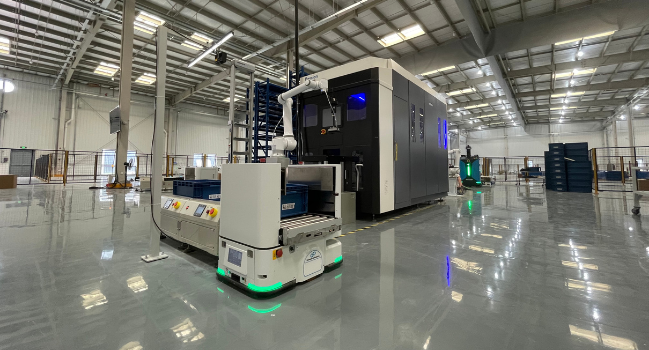
Compound Robots, a collaborative robots top-mounted on an autonomous mobile robot can solve high-frequency and changeable patterns in all-sized factories, boosting productivity, quality, and consistency.
Taking semiconductor manufacturing to a new level of automation.
Since 2020, the demands for semiconductors and investment of manufacturing facilities have been remain record growth. The cause sets in the shift towards all-electric society with automation of the industry, buildings, mobility and energy sectors. At very same time, skilled labor shortage with covid-related travel restrictions has suffering manufacturers productivity and goods quality. This implies that chip factories must prepare themselves and their manufacturing operations for the future, since demands for the dependability and efficiency of such smart factories are surging. Still, there no surprise in the era of industrial 4.0, semiconductor and electronics sectors have the highest requirements for automation.
Quality, cycle time, particle creation, and cost reduction are at the heart of the semiconductor industry's automation requirements. We have already seen many solutions to these problems, and collaborative robots are one of the best technologies for these adopters. Cobot provides manufacturers with a flexible automation solution that can be configured to do a wide range of tasks, including machine tending, material handling, component insertion, dispensing, and inspection. However, material handling and machine tending are the exact capabilities needed for a smart chip factory.
These collaborative arms enable safe and precise handling of sensitive components, such as silicon wafers. They are incredibly dependable for attending machines in a semiconductor production process, especially with certified or customized application arm-kits. But the automation is only half-way through.

Next generation of flexible automation solution.
Autonomous mobile robots (AMR) are very common in warehouses and manufacturing floors these days for their flexibility and safety features, and they primarily operate as material handlers or depend on what add-on modules are equipped. Unlike their predecessors, the AGV (automated guided vehicle) relies on magnet tape or track to operate, which is still used in semiconductor factories.
In an old-fashioned semiconductor production scenario, the silicon wafers will be picked up from the saw or wash process by a robotic arm (a cobot) and placed into a holder case, then transported by work or some types of AGV to the next production phase. This automated process raises two important issues: the risk of damage when handling fragile wafers and the potential source of contamination by humans. Secondly, complex connections between different automated 3rd-party devices are always a treat for the entire operation due to error rates, maintenance costs, and a major obstacle for changing production patterns.

Industry-Leading Integrator of collaborative robots on AMRs
Compound robots, a collaborative robot integrated on top of autonomous mobile robots, make them able to solve all potential problems of quality, damage, and consistency issues. Compound robots aid productivity by solving high-frequency and changeable manufacturing process patterns from wafer back grinding all the way to the last steps of test, trim, and plating. By top-mounted on AMRs, machine tending and material handling/transport are integrated into one robot’s task. Oasis SRA module AMR can streamline entire semiconductor production lines with the least amount of human interference by bringing material handling and transport capabilities under one single source on one single robot.
It wasn’t a simple task to establish stable and synergistic operation for the two devices. The major challenge is in ensuring mechanical arms work together with AMR to meet the specific automation needs. In a semiconductor production facility, the robot will take and move materials in a completed and integrated process with production lines. Thus, more stringent requirements have challenged us from operating environments, software adaptations, and the openness of collaborative robots.
By implementing many compound robot solutions across various industries, we have accumulated sufficient integration experience, and proven system integration capability. By the versatility of Oasis series AMR, which cobot modules can be mounted on to suit a variety of different tasks under stringent Class 100 cleanroom conditions. These robots provide consistently high quality and optimum production through autonomous navigation, safe coordination with human operators, and accurate handling of fragile components. As highly adaptable production assistants, they elevate cleanroom manufacturing to new heights.

Feely-scalable system, The RIoT Flexible Platform
As is commonly known, the semiconductor industry has one of the highest levels of automation amongst all manufacturing sectors. The integrated Fleet Management System allows all compound robots to communicate with the higher-level host system. The jobs are instantly assigned to the best positioned robots. The RIoT integrated into software assesses incoming transport orders for available robots, defining priority and routes. Under the RIoT, the fleet management system can expand from a single-point automated workflow to a full-scale compound robot fleet operating multiple production lines.
Standard Robots provides software, collaborative robots, and automated internal logistics all under a single source, allowing for quick, flexible, and customizable system integration in both new and current production facilities. Cost-effectiveness and ROI are guaranteed with us through robust hardware, scalable software, and worldwide service networks.
